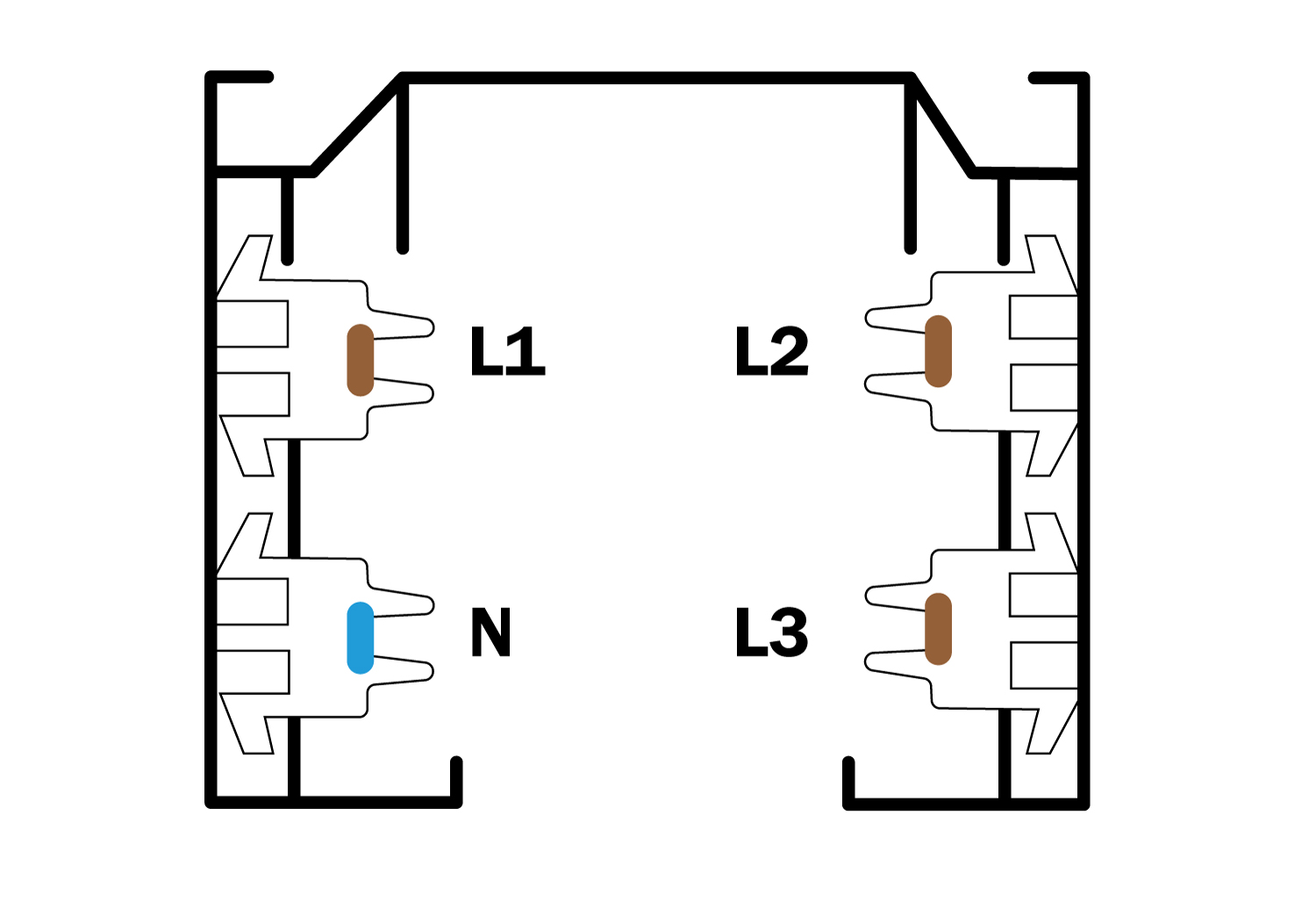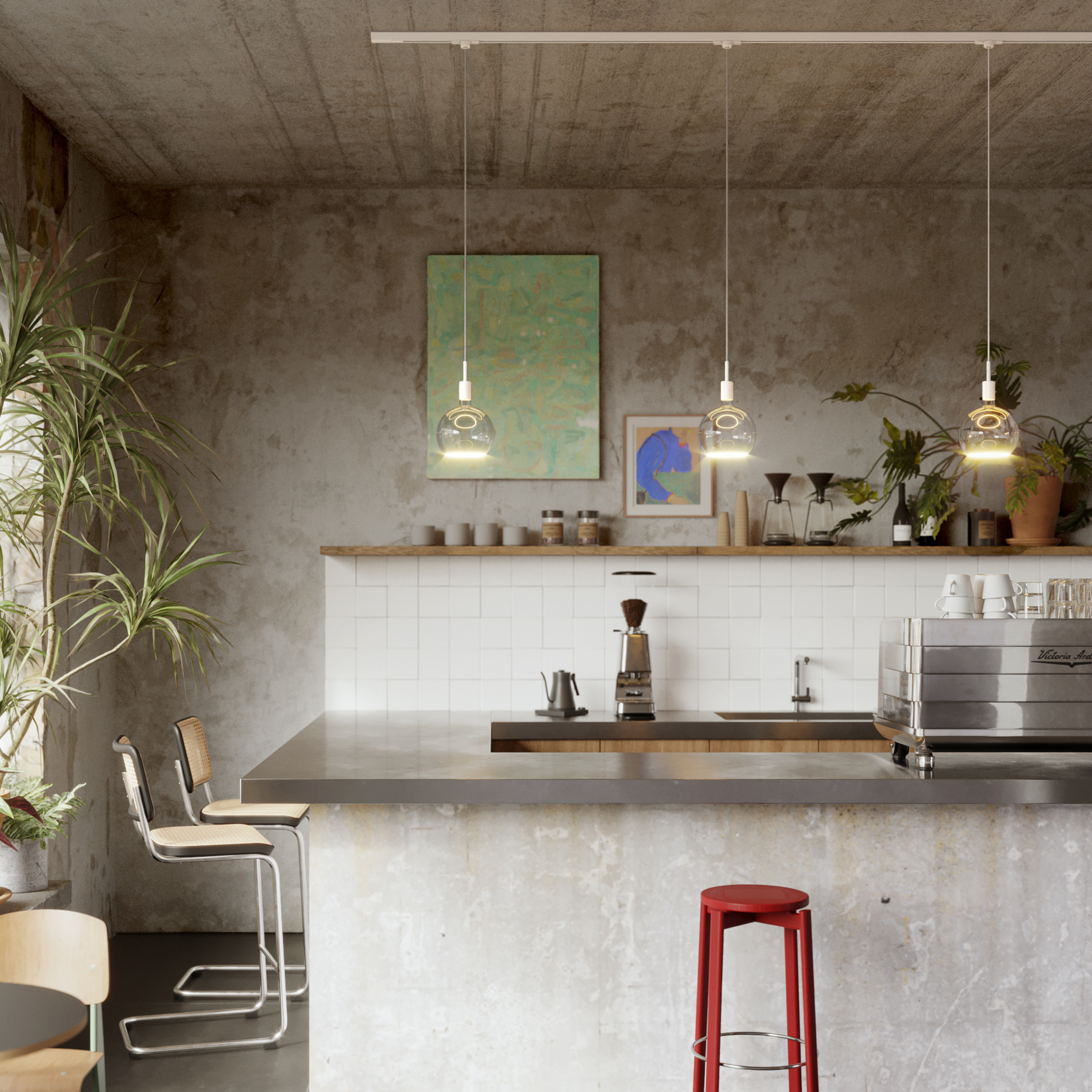You must be logged in to post comments
Blog Search
Blog Category
Blog Archive
Recent post
Latest Comments
- Patrick Laing on This is a website with terrifi...
Popular Articles

Track lighting represents a practical and versatile solution in the field of lighting technology, a real system that allows you to completely change the appearance and functionality of the lights in a room without having to intervene on the electrical system. The track makes it possible to add several lamps (luminaires) in line from a single existing lighting point. It also allows you to change your mind and simply move a suspension without having to drill new holes or plaster old ones.
Popular in the contract world, such as restaurants and bars where it is common to move tables and consequently also the lamps that illuminate them, track lighting is however also becoming increasingly popular in domestic environments.
When we speak of track lighting, we are referring to a system consisting of a track, usually fixed to the ceiling or wall, on which different types of luminaires can be installed, removed and repositioned. It is a kind of 'light highway', inside which run semi-rigid copper conductors that feed the lamps. Each is equipped with a specific adapter, which, once inserted, establishes an electrical connection allowing it to function.
Lamps that are to be mounted on tracks have adapters instead of rosettes or plugs, and these adapters have two metal strips that make contact on the copper conductor carrying the neutral (the equivalent of the blue cable) and on the copper conductor carrying the line or phase (the equivalent of the brown cable).
The advantages of this system are manifold:
- Flexibility: lights can be moved and added without changes to the electrical system
- Versatility: track lights are suitable for different types of rooms and furnishing styles
- Customisation: from spotlights to pendant lamps, the choice of compatible luminaires is vast
- Ease of installation and maintenance: it is very easy to add, remove, move lamps
The mains voltage, which is the voltage from conventional systems, is 220/230 V, and is carried by cables that have two conductors, the neutral and the line (or phase).

Single-phase tracks operate with a single supply circuit, i.e. they have only two conductors: one for the neutral and one for the (single)phase. All energy is therefore supplied through a single phase and the lamps on a single-phase track can only light up all at once.
It is a bit as if all the lamps on the track were powered by a single cable with a single plug, and so of course they can only be switched on and off all at once.

The three-phase system has 4 copper conductors, one of which carries the neutral and 3 carry 3 different phases (i.e. 3 lines). It can therefore support high loads, and allows a large number of luminaires to be managed. In addition, it offers greater flexibility in circuit management. Three-phase tracks are in fact designed to offer three independent power supply circuits, and allow up to three separate ignitions.
This allows the lights mounted on the same track to be divided into three groups, each of which can be switched on individually or together, depending on requirements such as the intensity of natural light available in the room. With the three-phase system, it is as if there were three cables with three different plugs, so the user can decide whether to attach or detach one, two or all three. In the adapters, there is a selector that allows the user to choose which of the lines to connect to: L1 (line 1) , L2 (line 2) and L3 (line 3).
A further advantage of three-phase rails is the standardisation of adapter sizes and positions. Unlike single-phase rails, which were often not standardised, with the introduction of three-phase rails manufacturers started to develop a more consistent system. This allows power supplies of different brands to be used on rails of different manufacturers, making it possible to use power supplies of some brands on rails of other brands.
No. Single-phase rails are designed for 2 conductors, whereas 3-phase adapters require a 4-conductor system.
Extra-low voltage rails (less than 48 V) are usually smaller and are powered by a transformer that transforms the mains voltage (220/230 V) into extra-low voltage.
Mains-voltage rails are usually used on the ceiling or pendant and not on the wall because the conductors inside are live with mains voltage and placing them on the wall could pose a risk, especially if a child were to try to stick their hand in.

The beauty of track lighting lies in its versatility. You can choose from a wide range of compatible options, each with its own characteristics. And while classic adjustable LED spotlights allow you to direct the light exactly where you need it, pendants add a touch of style to modern design and allow you to create great focal points.
When designing a track lighting system, you have to think like a film director. Start by carefully analysing the lighting needs of the space: which areas require brighter lighting? Where do you need accent lighting? Which architectural or decorative elements do you want to highlight? This will make it easier to choose between the different options, remembering that you can always change the configuration if you need to.
The installation of a track system requires specific electrical skills. For this reason, DIY without specific skills is strongly discouraged. The best solution? Rely on a qualified professional who will not only guarantee the safety of the installation, but also ensure compliance with current regulations.
Once installed, the system requires minimal maintenance and unprecedented flexibility and customisation. With the right design and choice of components, this lighting system can not only meet the needs of the moment, but can also evolve over time.
You must be logged in to post comments
Start typing to see products you are looking for.

Get 10% off now!
Sign up for our newsletter and get inspired to light up your spaces with style.
0 Comments